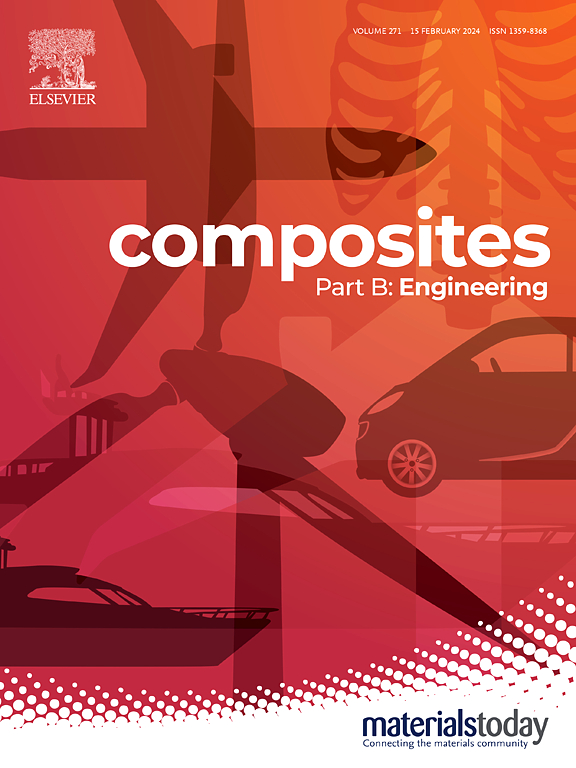Heat transfer model for temperature-sensing polymer composite EV battery enclosure
IF 12.7
1区 材料科学
Q1 ENGINEERING, MULTIDISCIPLINARY
引用次数: 0
Abstract
Increased decarbonization efforts have led to greater Electric Vehicle (EV) adoption, with Lithium-Ion Batteries (LIBs) as the primary energy storage system. While generally safe, these batteries are susceptible to a catastrophic failure mode called thermal runaway, which can result in battery fires and explosions. To improve EV safety, a novel self-contained temperature-sensing LIB enclosure was proposed, functioning independently of other management systems. This study designed a Fiber Reinforced Polymer (FRP) composite enclosure to replace traditional metal ones, reducing weight while enabling temperature sensor embedment during manufacturing. Embedding sensors inside the composite mitigates space constraints and protects hardware but introduces a time lag in detecting internal temperature surges. This study characterizes that time lag through experiments and develops an accurate heat transfer model. A novel experimental setup was designed to replicate thermal runaway conditions, both thermal shock (fast surges) and thermal ramp-up (slow increases), on a temperature-sensing composite specimen. The experiments provided data for model calibration and validation. The 3D finite element heat transfer model was developed to study temperature propagation in composites with embedded sensors, considering anisotropic material complexities and transient boundary conditions. This model aligned well with experimental results, yielding mean absolute percentage errors below 0.065 %. It serves as a robust tool for simulating composite temperature responses under diverse thermal runaway scenarios. Additionally, the model was used to determine optimal sensor placement in a temperature-sensing composite enclosure. This study lays the groundwork for future research on inferencing and monitoring LIB enclosure interior temperatures for early thermal runaway warnings.
求助全文
约1分钟内获得全文
求助全文
来源期刊

Composites Part B: Engineering
工程技术-材料科学:复合
CiteScore
24.40
自引率
11.50%
发文量
784
审稿时长
21 days
期刊介绍:
Composites Part B: Engineering is a journal that publishes impactful research of high quality on composite materials. This research is supported by fundamental mechanics and materials science and engineering approaches. The targeted research can cover a wide range of length scales, ranging from nano to micro and meso, and even to the full product and structure level. The journal specifically focuses on engineering applications that involve high performance composites. These applications can range from low volume and high cost to high volume and low cost composite development.
The main goal of the journal is to provide a platform for the prompt publication of original and high quality research. The emphasis is on design, development, modeling, validation, and manufacturing of engineering details and concepts. The journal welcomes both basic research papers and proposals for review articles. Authors are encouraged to address challenges across various application areas. These areas include, but are not limited to, aerospace, automotive, and other surface transportation. The journal also covers energy-related applications, with a focus on renewable energy. Other application areas include infrastructure, off-shore and maritime projects, health care technology, and recreational products.
 求助内容:
求助内容: 应助结果提醒方式:
应助结果提醒方式:


